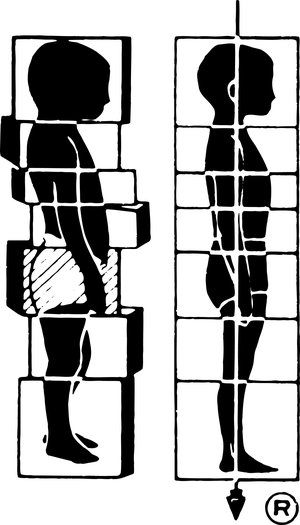Fascia
What is Fascia?
Fascia is essentially all of the connective tissue in the body. Medically speaking, “connective tissue” also includes bone, although that is not what people are typically referring to when they refer to connective tissue. Rich in collagen fibers, fascia forms a vast tissue network throughout the body, surrounding every cell and continuous from head to toe. It is the white tissue in the pictures shown here. It also includes the tendons that join the muscle to the bone, as well as the joint capsules and the ligaments. Fascia contains numerous nerve fibers and sensory receptors and is better termed, “neuromyofascia”. The superficial fascia, directly under the skin, contains adipose tissue and collagenous fibers and is also rich in nerve fibers. This layer can be very much involved in holding the twists in the deeper tissues and the counterrotations in our joints. Scar tissue and adhesions are basically the same as fascia, only very disorganized and more restrictive. Fascia is paper thin in some areas, and can be much thicker in areas such as the IT band running down the side of the upper leg. It is also extremely strong.
Why is Fascia Important?
The fascia thickens and hardens where there is chronic tension and strain and where the nerves passing through it are mechanically irritated. Because it forms a continuous network throughout the body, and because it is so strong, Rolfers consider fascia to be the "organ of form." Thus, the fascia largely dictates our shape and freedom of movement. In addition, all nerves and blood vessels run through the fascia. Therefore, if the connective tissue is tight, the associated tissues will have poor nutrient exchange. This exacerbates any painful situation because toxic metabolic waste products build up and this further aggravates pain receptors. Tethered nerves can be tugged and overstretched, leading to neurogenic inflammation. This creates a vicious cycle by creating more muscle tension and fibroblast contraction, leading to further thickening and hardening of the fascia, which, in turn, further limits mobility.
Fascia is composed mainly of collagen fibers, together with water and other proteins which, ideally, provide a lubricative quality. Due to the regular alignment of the fibers, fascia often has a crystal-like appearance. The connective tissue fibers extend deep in between individual muscle cells and between practically all cells of the body.
Fascia tends to stiffen as we age becoming tight and dried out. Under inflammatory conditions, the body's lubricative material can become more glue-like, helping to attract more inflammatory cells and adhering various layers together. The manipulations of Rolfing help to stretch, loosen and rehydrate the tissue so it can be more supple and resilient, and restore glide to the nerves. We don't have to get stiffer and stay that way just because we get older.
In 2007, Harvard University held the first International Fascia Research Congress. This was the brainchild of the Dr. Ida Rolf Institute, and was spearheaded by a Rolfer on staff at Harvard. This was the first international congress of fascia researchers, and broke new ground scientifically and medically speaking. Since then, 5 more congresses have occurred and will continue. The involvement of the Dr. Ida Rolf Institute in this process has cemented the Rolfing community into the history of bringing the understanding of fascia into the mainstream, which Dr. Rolf had herself spoke extensively on decades before.
For more information regarding the science of fascia, visit
https://fasciaresearchsociety.org
Facial Plasticity: A New Neurobiological Explanation by Robert Schleip
Part 1
Part 2



